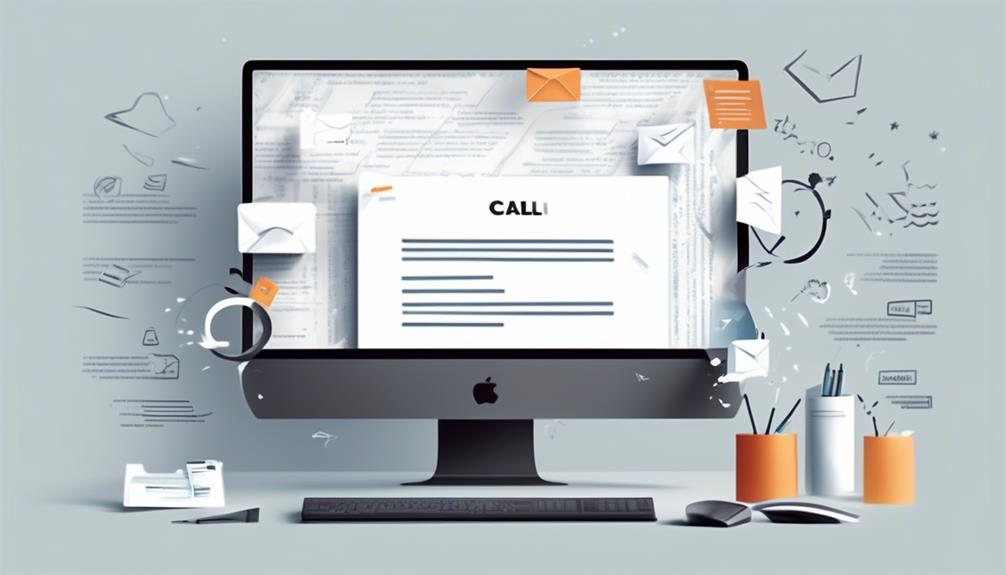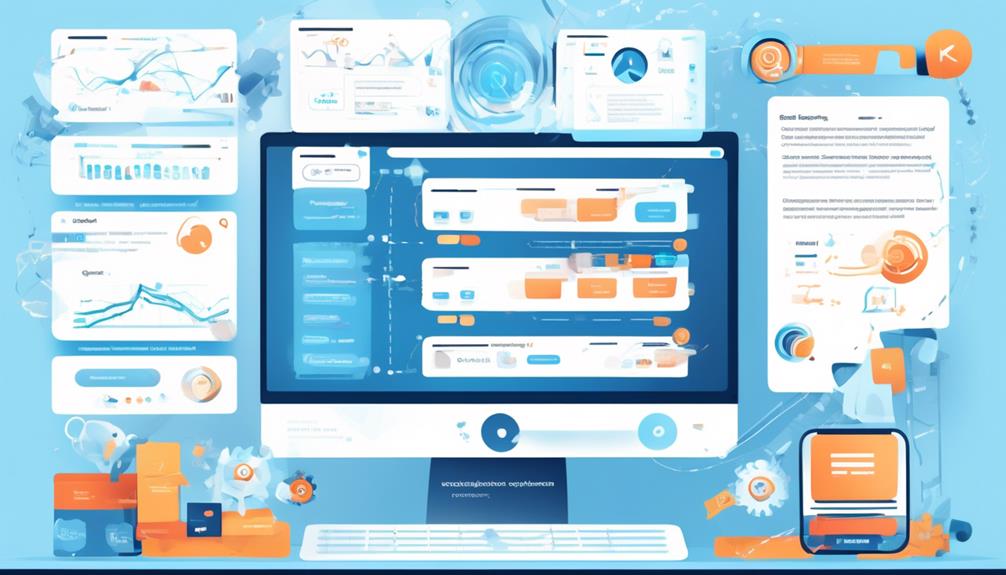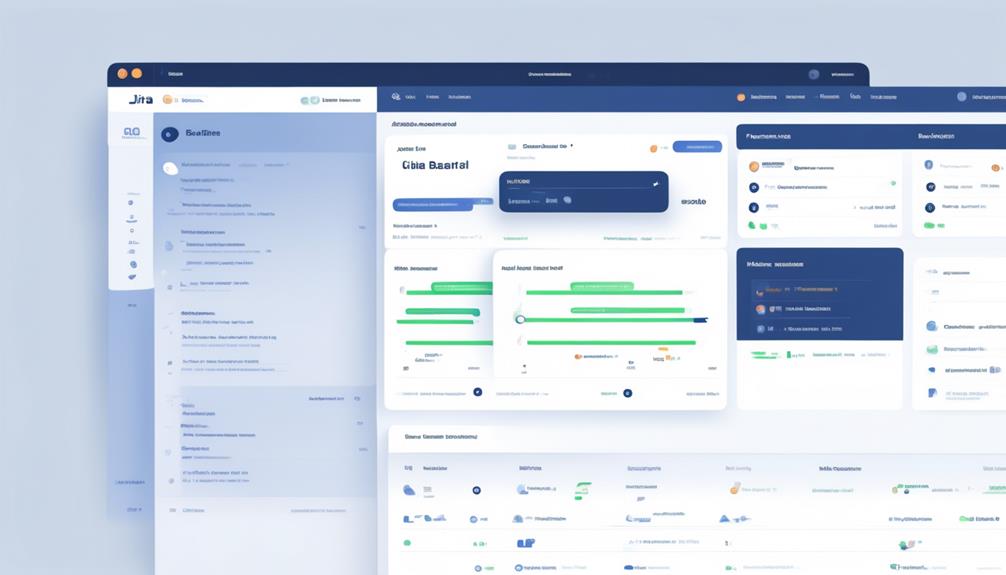Regarding email management, Airtable Email Automation is akin to possessing a smoothly operating apparatus at your disposal.
The ability to set up automated triggers and conditions for sending emails can save valuable time and streamline communication processes.
But there's more to it than just sending out mass emails – the customization options and testing capabilities make it a powerful tool for tailoring and optimizing email campaigns.
However, there are some limitations to be aware of, and understanding how to work within these boundaries can make all the difference in maximizing the potential of this feature.
Key Takeaways
- Airtable Email Automation allows users to set up automated triggers and conditions for sending emails.
- Users can customize the email content, including the CC, BCC, From name, and Reply to options.
- Trigger conditions can be set to personalize recipients based on specific criteria.
- Dynamic email elements enhance personalization by incorporating recipient names, specific records, and fields.
Understanding Airtable Email Automation
Understanding Airtable Email Automation is essential for streamlining communication and maximizing productivity within your workspace.
With Airtable's email automation feature, users can streamline their communication processes by setting up automated emails to be sent based on specific triggers. To start building an Automation, users can click on the Automations button in Airtable and then click Create an automation. From there, they can select a trigger step, such as a new record being created, and then add the Send an email action.
This allows users to send emails automatically when certain conditions are met, saving time and ensuring timely communication.
The Send an email action provides users with options to customize the email, including CC, BCC, From name, and Reply to. However, it's important to note that the number of automation runs left for the workspace determines the limit for the Send an email action.
This feature is available across different platforms, including the web/browser, Mac app, and Windows app, making it easily accessible for all users.
Setting Up Email Triggers

Let's talk about the important aspects of setting up email triggers in Airtable.
We'll cover trigger conditions, email content, and the testing and execution process.
Understanding these points will help streamline your email automation setup and ensure successful communication with your team or clients.
Trigger Conditions
To ensure precise and targeted email communication, setting up trigger conditions allows us to define specific criteria for when an email should be sent.
When setting trigger conditions, we can:
- Customize the recipients based on specific criteria such as values in the email field or other related fields.
- Set conditions for the subject line and message body, allowing for personalized and relevant content.
- Add additional options such as scheduling the email to be sent at a specific date and time.
Email Content
When setting up email triggers, we can seamlessly continue our precision in targeted email communication by focusing on customizing recipients and setting conditions for personalized and relevant content, building on the trigger conditions established previously.
In the 'Send an email' action, we've the flexibility to craft the email content, including the body of the email, subject line, and additional options like CC, BCC, From name, and Reply to. It's crucial to carefully review and test the email before activating the automation.
Images can be incorporated in the email body or as attachments, with the option to use HTML image tags for in-line images. While there are limitations to consider, such as the number of recipients per run and tracking capabilities, the ability to tailor the email content to our audience's needs is a powerful tool in our email automation arsenal.
Testing and Execution
In this phase, we initiate the process of testing and executing email triggers to ensure seamless integration with our automation system. Here's what you need to do:
- Set up triggers to fire when specific conditions are met before adding the 'Send an email' action to the automation.
- Configure recipients, subject line, and message body when adding the 'Send an email' action to the automation.
- Customize additional options such as CC, BCC, From name, and Reply to while setting up the email trigger.
It's crucial to preview the email and run a test before turning on the automation to ensure it works as intended.
Additionally, consider alternative methods if you need to send emails to a larger number of recipients due to the overarching limit of 1000 recipients per run in automations with the 'Send an email' action.
Creating Personalized Email Templates

Let's talk about the power of customized email content, dynamic email elements, and tailoring email messages.
Personalized email templates allow us to craft messages that truly resonate with our recipients, making the communication more meaningful and effective.
Customized Email Content
How can we create compelling and personalized email templates for recipients through customized email content?
When customizing email content, we can tailor the email body and subject line to resonate with each recipient. Here's how to achieve this:
- Use merge tags to personalize the email body with recipient-specific information such as name, company, or previous interactions.
- Design email templates with tailored subject lines to capture the recipient's attention and encourage them to open the email.
- Leverage recipient data to create highly personalized email content, ensuring that the message feels relevant and engaging to the recipient.
Dynamic Email Elements
Utilizing dynamic email elements elevates the level of personalization in email templates, ensuring that recipients receive tailored and engaging content. By incorporating dynamic elements, such as recipient names, specific records, and fields, email templates can be customized to resonate with individual recipients. This level of personalization enhances the effectiveness of the send email action, resulting in higher engagement and relevance. Below is an example of how dynamic email elements can be used to create personalized content:
| Dynamic Element | Implementation | Result |
|---|---|---|
| Recipient's Name | Hi [Recipient's Name], | Personal touch |
| Specific Records | Highlighting recent purchases or interactions | Relevance |
| Customized Content | Tailoring product recommendations | Enhanced engagement |
Incorporating dynamic email elements into templates allows for the delivery of highly customized content, ultimately improving the effectiveness of the send email action.
Tailoring Email Messages
To create personalized email templates, we can harness the power of dynamic email elements to ensure that recipients receive tailored and engaging content.
When tailoring email messages, we've the flexibility to configure recipients, subject lines, message bodies, CC, BCC, From name, and Reply to.
Additionally, we can preview the email before turning on the automation to send.
It's essential to consider the scheduled time for sending emails to optimize engagement.
Running a test of the automation before full deployment allows us to gauge its effectiveness and make any necessary adjustments.
Scheduling Email Deliveries

Scheduled email deliveries in Airtable can be set up using the 'At a scheduled time' trigger, allowing for regular and timely distribution. This action is ideal for automating routine communication, such as weekly updates or monthly newsletters.
When configuring the scheduled delivery, users can customize the sender information, including the 'From' name and 'Reply To' email address, ensuring that the emails are sent from the appropriate source. Additionally, the email formatting supports Markdown syntax, HTML tags, and inline CSS for styling, enabling users to create visually appealing and engaging content.
To automate the process of sending email digests, users can incorporate the 'Find records' and 'Send email' actions within their workflows. However, it's important to understand the limitations and usage limits of the 'Send an email' action based on the workspace's plan types. Users should familiarize themselves with the specifics of their plan to ensure that their automated email deliveries align with their allocated resources.
Furthermore, Airtable's flexibility extends beyond the web platform, as users can also schedule email deliveries using the Mac app, providing a seamless experience across different devices.
Exploring Airtable's Intuitive Interface

Let's talk about the user-friendly interface design that Airtable offers for creating and managing automations.
The intuitive data organization within the interface makes it easy to navigate and configure automation actions.
This efficient workflow management tool streamlines the process of setting up triggers and testing automations, ultimately saving us time and effort.
User-Friendly Interface Design
Airtable's intuitive interface design seamlessly integrates user-friendly automation actions, making it effortless to configure and manage email automations.
When beginning the setup, users are greeted with a clear and user-friendly interface that allows them to easily select the 'Send an email' action. This action is available across various platforms, enabling users to customize recipients, subject lines, and message bodies. The interface also provides the option to preview and run a test before activating the automation.
Additionally, users can personalize the From name and Reply to Email Address, enhancing the user experience. While there are limitations based on plan types, Airtable's interface design ensures that users can swiftly execute previous actions and efficiently navigate through the email automation configuration process.
Intuitive Data Organization
Exploring Airtable's Intuitive Interface for email automation effortlessly extends to intuitive data organization, streamlining the process of managing and categorizing data within the platform.
With Airtable, users can easily create custom fields to capture specific data points, such as recipient information, email content, and automation triggers. The intuitive drag-and-drop interface allows for seamless reordering of fields, making it simple to prioritize and categorize data according to individual preferences.
Additionally, Airtable offers powerful filtering and sorting options, enabling users to quickly access the exact information they need for email automation. By providing a visually intuitive way to organize data, Airtable enhances efficiency and effectiveness, ultimately contributing to a more streamlined email automation process.
This intuitive data organization feature sets Airtable apart as a comprehensive solution for managing email campaigns.
Efficient Workflow Management
Effortlessly managing workflow tasks becomes a reality with Airtable's intuitive interface, allowing for seamless automation setup and efficient email campaign management.
With Airtable, efficient workflow management is achievable through:
- Creating automations with a few clicks, using the Automations tab in the upper left corner of the base.
- Setting up triggers to fire based on specific conditions and adding actions like sending emails to streamline workflow processes.
- Customizing email options such as CC, BCC, From name, and Reply to, and running tests before activating the automation.
Airtable's interface simplifies the process of managing workflow tasks, ensuring that email campaigns and other tasks are executed efficiently and with ease.
This intuitive platform empowers users to optimize their workflow management, boosting productivity and effectiveness.
Leveraging Powerful Automation Features
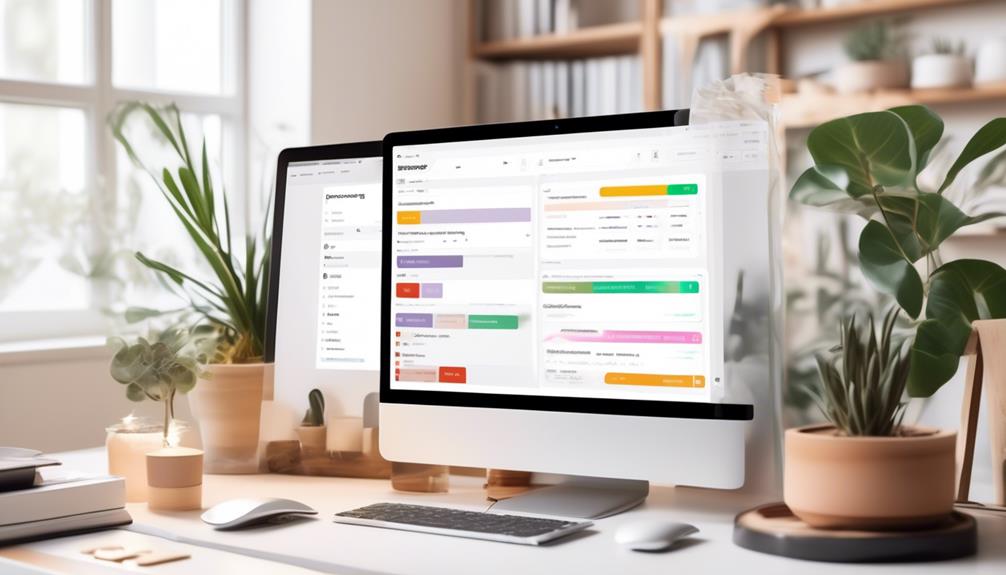
Leveraging the powerful automation features in Airtable allows users to streamline their workflows and increase productivity with ease and flexibility. Owners and creators have full control over creating, deleting, duplicating, configuring, and renaming automations.
The 'Send an email' action is available across different platforms, and users can customize email content, including recipients, subject lines, and message bodies. The timing of email sending is determined by the chosen trigger, and actions can be scheduled for specific days and times.
It's important to note that the number of automation runs is limited by the workspace's plan, which can affect the number of emails that can be sent. Daily limits for non-collaborator email addresses vary per plan type.
To access these powerful automation features, users can navigate to the upper left corner of the Airtable interface and select the 'Automations' tab.
Sending Automated Email Digests
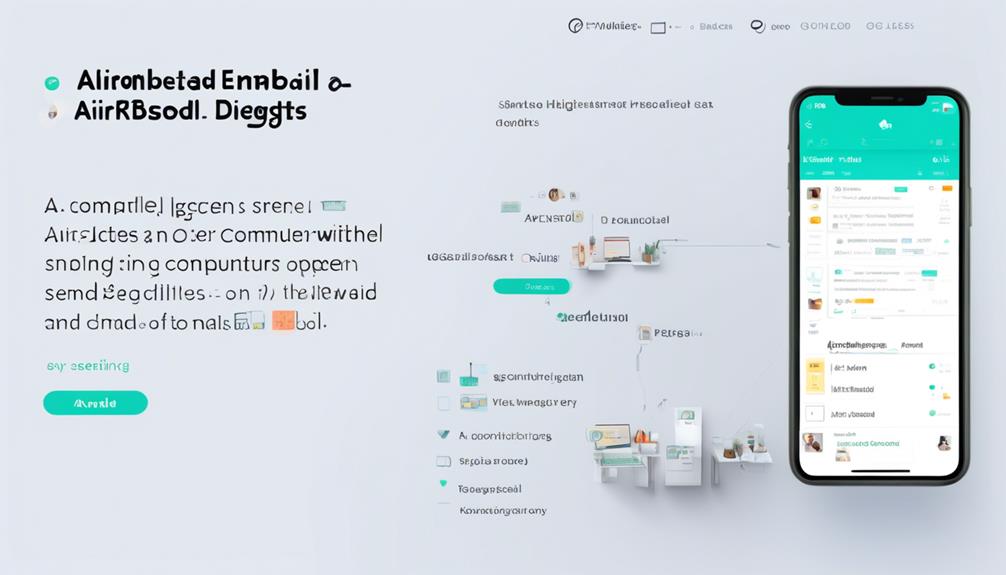
To send automated email digests in Airtable, users can create scheduled automations to regularly deliver record information to designated recipients. This feature allows for efficient sharing of updated data without manual intervention. Here's how it works:
- Select Trigger: Choose the 'At a scheduled time' trigger when setting up the automation. This ensures that the email digests are sent out at predefined intervals, such as daily, weekly, or monthly, based on the specific needs of the recipients.
- Customize Content: Tailor the content of the email digest to include relevant record information. This can range from project updates, task assignments, sales figures, or any data stored within the Airtable base. Personalization options are available to ensure the email content is tailored to the recipients' preferences.
- Recipient Management: Define the designated recipients for the automated email digests. Recipients can be individuals or distribution lists, allowing for flexibility in managing who receives the updated information.
Managing Email Communication Efficiently
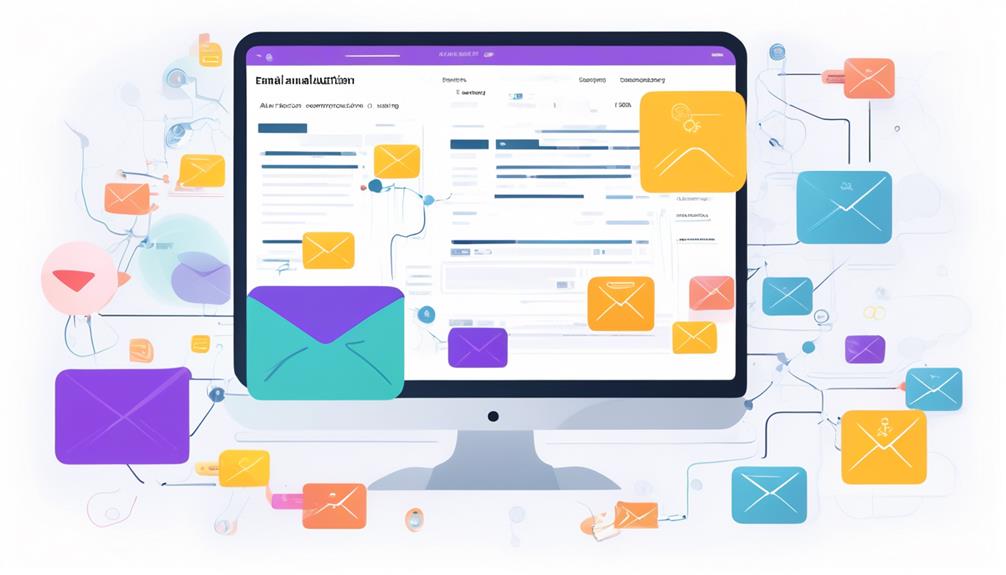
Managing our email communication efficiently allows us to streamline our workflows and ensure effective collaboration within our team. By implementing the right strategies and tools, we can optimize our email management, leading to improved productivity and reduced stress. Here are some key tips for managing email communication effectively:
| Tip | Description |
|---|---|
| Use clear and concise subject lines | Clearly summarize the email content to help recipients understand the purpose at a glance. |
| Set specific time slots for checking email | Avoid constant interruptions by designating specific times to check and respond to emails. |
| Implement email filters and labels | Organize incoming emails by creating filters and labels based on priority, sender, or content. |
Implementing these strategies will help us gain control over our email communication, allowing us to focus on important tasks and collaborate more efficiently as a team.
Enhancing Email Workflows With Airtable

Enhancing our email workflows with Airtable allows us to seamlessly integrate efficient email management strategies, optimizing our team collaboration and productivity. With Airtable's 'Send an email' automation action, we can streamline our communication processes and improve our overall workflow.
Here's how we can enhance our email workflows with Airtable:
- Customization: Airtable enables us to customize various email options such as CC, BCC, From name, and Reply to, providing us with flexibility in managing our email communications.
- Platform Accessibility: The 'Send an email' action is available on the web/browser, Mac app, and Windows app platforms, ensuring that our team can access and utilize this feature across different devices and operating systems.
- Control and Scalability: Owners and creators have full control over creating, deleting, duplicating, configuring, and renaming automations, allowing us to adapt our email workflows according to our evolving needs. Additionally, the scalability of the 'Send an email' action, based on the number of automation runs and plan type, provides us with the ability to manage email communication effectively as our team and operations grow.
Maximizing Email Automation Potential

Maximizing our email automation potential involves harnessing the full range of customization options and ensuring seamless accessibility across platforms. As owners and creators, we've the power to create, delete, duplicate, configure, and rename automations, giving us complete control over our email workflows.
The 'Send an email' action is conveniently available on the web/browser, Mac app, and Windows app platforms, allowing for flexibility and accessibility. Furthermore, we can customize additional options such as CC, BCC, From name, and Reply to within the 'Send an email' action, tailoring our emails to specific needs.
To ensure smooth email sending, it's essential for collaborators to verify the emails connected to their Airtable accounts and keep an eye on the automation runs left for the workspace, as this determines the limit for the 'Send an email' action. By being mindful of these factors, we can avoid any potential email sending issues and make the most of our automation capabilities.
Optimizing Email Processes

How can we streamline our email processes to maximize efficiency and engagement? Here are a few ways to optimize your email processes:
- Customize Content: Take advantage of the ability to customize recipients, subject lines, message bodies, CC, BCC, From name, and Reply to when setting up the email automation. Tailoring the content to the specific audience can greatly enhance engagement.
- Preview and Test: Before activating the automation, make sure to preview and test the email to ensure everything appears as intended. This step can help catch any potential issues before the email is sent out to recipients.
- Manage Automation Runs: Keep an eye on the number of automation runs left for your workspace, as this determines the limit for the 'Send an email' action. Understanding this limit will allow you to effectively manage and optimize your email automation processes.
Integrating Email Automation Tools

When integrating email automation tools, we can enhance our workflow and streamline communication processes for improved efficiency and engagement. Airtable's 'Send an email' action, available across all platforms, allows owners and creators full control over configuring and customizing automations to meet specific needs. By leveraging this feature, we can automate email notifications, reminders, and updates, saving time and ensuring timely communication. Additionally, the ability to customize options such as CC, BCC, From name, and Reply to further enhances the personalization and effectiveness of automated emails.
Integrating email automation tools into our workflow not only simplifies repetitive tasks but also ensures consistency and accuracy in our communication. Whether it's sending personalized emails to clients, notifying team members about updates, or automating responses to certain triggers, the seamless integration of email automation tools can significantly boost productivity and engagement.
What are the benefits of using email automation in Airtable?
Email automation in Airtable offers numerous benefits for efficiency and organization. With automate Airtable emails, users can streamline communication, save time, and ensure timely delivery of important messages. This powerful tool allows for personalized outreach and the ability to maintain seamless correspondence with clients and stakeholders.
Harnessing Airtable for Email Efficiency

To optimize email efficiency, we can leverage Airtable's 'Send an email' automation action to streamline communication processes and enhance workflow.
- With Airtable's 'Send an email' automation, we can schedule personalized emails to be sent to specific recipients based on triggers or conditions, saving time and ensuring timely delivery.
- The ability for owners and creators to have full control over the creation and configuration of automations allows for tailored and efficient email communication.
- The availability of the 'Send an email' action across multiple platforms such as the web/browser, Mac app, and Windows app ensures flexibility and accessibility in managing email automation.
Harnessing Airtable for email efficiency not only simplifies the process of sending emails but also allows for customization and control.
Frequently Asked Questions
Can You Automate Emails in Airtable?
Yes, we can automate emails in Airtable.
We'll configure the 'Send an email' action based on our plan type and platform.
Owners and creators have full control over setting up and customizing the email content, while editors have limited permissions.
It's straightforward to create and configure the automation by clicking on 'Automations' in the upper left corner of an open base and then clicking 'Create an automation.'
Can Airtable Integrate With Email?
Yes, Airtable can integrate with email. We utilize this feature to streamline communication and automate processes.
It allows us to send personalized emails, control the recipient, subject line, and message body, and manage additional options like CC, BCC, From name, and Reply to.
This integration enhances our workflow efficiency and facilitates seamless communication with our team and external partners.
What Is the Email Limit for Airtable Automation?
We've hit the email limit for our plan. It's crucial to consider other methods for reaching a larger audience due to these restrictions.
Our emails show as from Airtable Automations at noreply+automations@airtableemail.com, and Airtable doesn't provide delivery status, click-through rate, or open rate of sent emails. These limitations can impact our ability to effectively communicate with our audience, so it's essential to explore alternative communication strategies.
Does Airtable Send Confirmation Email?
Yes, Airtable does send confirmation emails.
These emails are automatically generated and sent to confirm various actions, such as account creation, form submissions, and automation setups.
The confirmation emails provide users with important information and serve as a record of the action taken.
They enhance user experience by ensuring transparency and clarity in the process.
Conclusion
In conclusion, Airtable Email Automation offers a user-friendly and efficient way to send personalized emails based on specific triggers and conditions.
While some may be concerned about the inability to remove Airtable branding or add custom branding, the platform's intuitive interface and customizable options make it a powerful tool for streamlining email processes.
With the ability to schedule and test email deliveries, Airtable Email Automation maximizes efficiency and ensures a seamless email automation experience.

